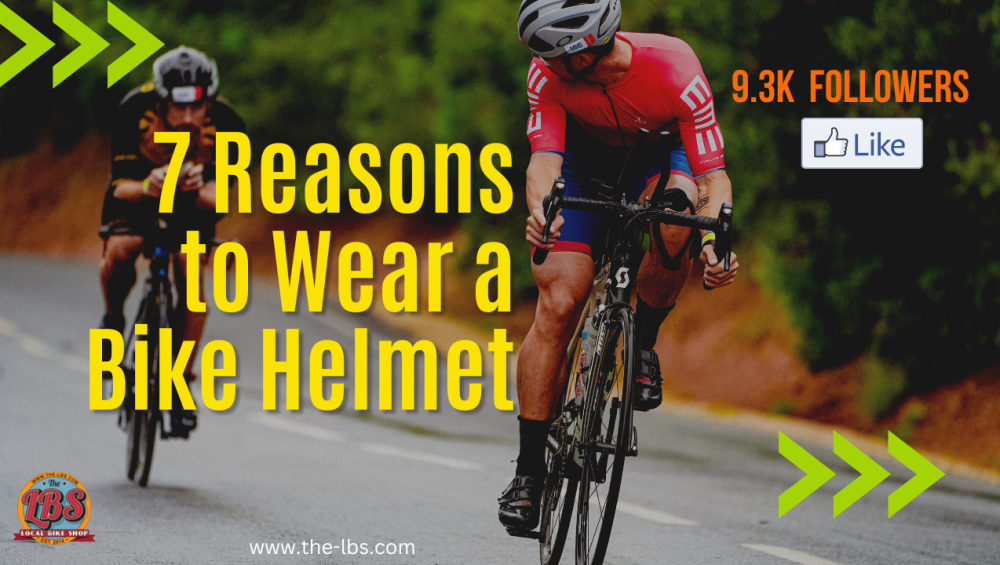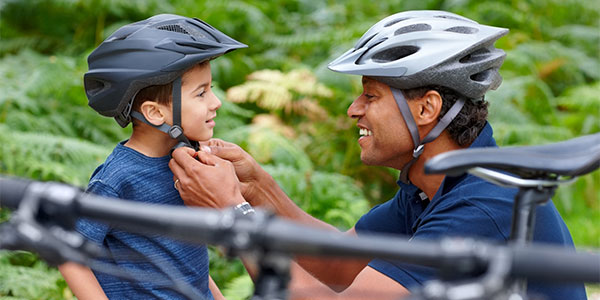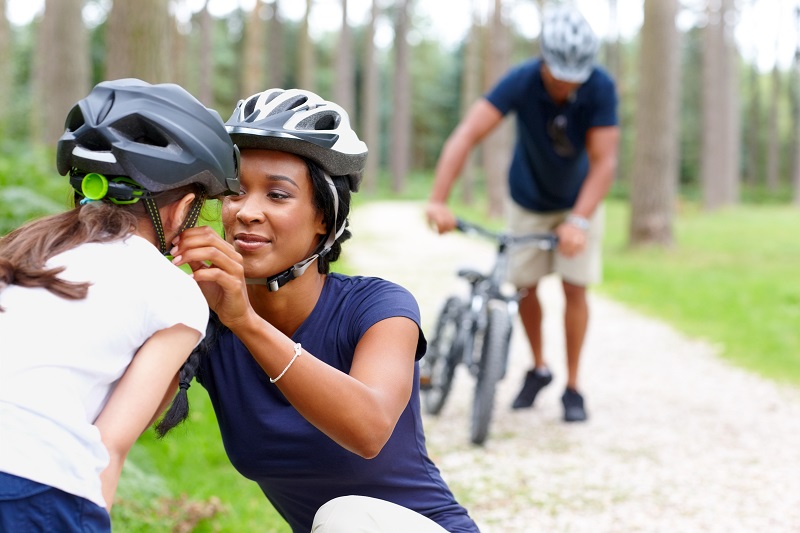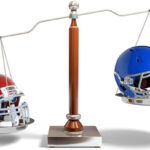Adults are not required to wear helmets while riding a bicycle in every location. Laws vary based on local regulations.
Bicycle safety is a critical topic for adults who regularly ride. Wearing a helmet can significantly reduce the risk of serious head injuries. Some regions mandate helmet use for all cyclists, while others have no such laws. Knowing your local regulations is essential for legal compliance and personal safety.
Even in areas without helmet laws, wearing one is a wise choice. It enhances your protection against unforeseen accidents. Safety gear, including helmets, plays a crucial role in promoting a safer cycling experience. Prioritizing your safety by wearing a helmet, regardless of legal requirements, is always a smart decision.
Importance Of Helmet Safety
Wearing a helmet while riding a bicycle is crucial. Helmets protect your head from serious injuries. Adults often underestimate the importance of helmet safety. It is essential for everyone, regardless of age. Helmets can save lives and prevent long-term damage.
Reducing Head Injuries
Helmets reduce head injuries by absorbing impact. They protect your skull and brain. Studies show helmets decrease the risk of head injury by 60%. Wearing a helmet reduces the severity of injuries in accidents.
- Helmets absorb the force of a fall.
- They provide a cushion for your head.
- They help prevent skull fractures.
- They reduce the risk of brain injuries.
Safety should always come first. Helmets make biking safer for everyone.
Legal Requirements
Laws on helmet use vary by location. Some places require all cyclists to wear helmets. Other areas only mandate helmets for children. It’s important to know the rules in your area.
| Location | Helmet Requirement |
|---|---|
| California | Under 18 |
| New York | Under 14 |
| Florida | Under 16 |
Even if it’s not required, wearing a helmet is wise. Protect your head and stay safe.

Credit: the-lbs.com
Common Misconceptions
Many adults believe helmets are unnecessary when riding a bicycle. This belief stems from various misconceptions. Understanding these myths is crucial for ensuring safety.
Helmets And Skill Level
One common myth is that skilled cyclists don’t need helmets. People think experience alone can prevent accidents. But even the best riders can face unexpected dangers. Potholes, reckless drivers, and sudden obstacles pose risks. Helmets protect against injuries regardless of skill level.
Short Rides And Safety
Another misconception is that short rides don’t need helmets. Many believe a quick trip to the store is harmless. But most accidents happen close to home. Short rides can be just as dangerous as long journeys. Helmets provide essential protection on every trip.
| Myth | Reality |
|---|---|
| Skilled riders don’t need helmets | Helmets protect everyone, regardless of skill |
| Short rides are safe without helmets | Most accidents occur close to home |
These misconceptions can lead to unsafe practices. Wearing a helmet should always be a priority.
Choosing The Right Helmet
Choosing the right helmet is crucial for adult cyclists. A good helmet can protect you from serious head injuries. Here, we explore helmet types and proper fit to help you make an informed decision.
Helmet Types
There are several types of helmets available for adults:
- Road Helmets: Lightweight and aerodynamic, ideal for road cycling.
- Mountain Helmets: Sturdy and offer more coverage, great for off-road cycling.
- Commuter Helmets: Designed for daily city rides, often with additional safety features.
- Full-Face Helmets: Provide maximum protection, suitable for high-risk activities like downhill biking.
Proper Fit
A helmet must fit properly to ensure safety. Follow these steps:
- Measure your head circumference using a tape measure.
- Choose a helmet size that matches your measurement.
- Adjust the straps so the helmet sits snugly on your head.
- Make sure the helmet does not move when you shake your head.
Here is a table to help you choose the correct size:
| Head Circumference (cm) | Helmet Size |
|---|---|
| 50-54 | Small |
| 54-58 | Medium |
| 58-62 | Large |
Remember, a helmet should be comfortable. It should not cause pain or leave marks on your head.

Credit: www.healthychildren.org
Helmet Maintenance
Proper maintenance of your bicycle helmet is essential for safety. A well-maintained helmet can save your life. It is vital to check and care for your helmet regularly.
Regular Inspections
Inspect your helmet for cracks and damage. Check the outer shell for visible damage. Look inside for any dents or cracks. Ensure the straps are not frayed or torn. Tighten any loose parts. Replace any broken or missing pieces.
Perform these checks monthly. If you ride often, inspect it more frequently. A table can help you track your inspections:
| Inspection Date | Condition | Action Taken |
|---|---|---|
| 01/01/2023 | Good | None |
| 01/02/2023 | Strap frayed | Replaced strap |
When To Replace
Replace your helmet after a crash. Even if it looks fine, damage may be hidden. Replace it every five years, even without accidents. Wear and tear can weaken the materials.
Look for these signs you need a new helmet:
- Cracks in the shell
- Frayed straps
- Loose padding
- Difficulty adjusting
Keep track of replacement dates to stay safe. Your safety depends on a reliable helmet. Keep a log to remember:
| Purchase Date | Replacement Date |
|---|---|
| 01/01/2018 | 01/01/2023 |
| 01/02/2023 | 01/02/2028 |
Safety Tips For Adults
Riding a bicycle is a great way to stay fit and enjoy the outdoors. But for adults, safety is essential. Following these tips can help you stay safe and have fun.
Visibility And Clothing
Wearing bright colors helps drivers see you. Reflective gear is also important, especially at night. A reflective vest or jacket can make a big difference. Adding reflectors to your bike is another smart move.
Choose snug-fitting clothing that won’t get caught in the bike. Loose clothes can be dangerous. Make sure your shoes are secure and comfortable. Avoid wearing headphones, as they can block important sounds.
Road Awareness
Stay alert at all times. Always follow traffic rules and signals. Use bike lanes when available. Riding with the flow of traffic is safer. Avoid busy roads if possible.
Always signal your turns to inform drivers and other cyclists. Use hand signals to show your intentions. Look both ways before crossing streets. Keep an eye out for parked cars and opening doors.
| Safety Tip | Why It’s Important |
|---|---|
| Wear Bright Colors | Increases visibility to drivers |
| Use Reflective Gear | Helps you be seen at night |
| Follow Traffic Rules | Reduces risk of accidents |
| Signal Your Turns | Keeps other road users informed |
- Stay alert and focused.
- Wear appropriate clothing.
- Use hand signals.
- Choose safe routes.
Encouraging Helmet Use
Wearing helmets while riding bicycles can save lives. Yet, many adults skip this important safety step. Encouraging helmet use is crucial for protecting our community. This section explores effective ways to promote helmet use among adults.
Leading By Example
Adults must lead by example. Children imitate adults. When adults wear helmets, children see it as normal. This simple act can change attitudes towards helmet safety.
Riding groups should encourage members to wear helmets. Group leaders can set the standard. This creates a culture of safety within the group.
Parents should always wear helmets. This reinforces the importance of helmet use to their children. Community leaders should also wear helmets during public events. This sends a strong message about safety.
Community Programs
Community programs can boost helmet use. Organizing helmet giveaways or discounts can make helmets more accessible. These programs can be promoted through local media and social platforms.
Another effective method is hosting safety workshops. These workshops can educate on the importance of wearing helmets. Topics can include how helmets prevent injuries and proper helmet fitting.
Schools can play a significant role. School programs can include helmet safety in their curriculum. This can be reinforced through events like “Bike Safety Days”.
| Program | Description |
|---|---|
| Helmet Giveaways | Provide free or discounted helmets |
| Safety Workshops | Teach importance and fitting of helmets |
| School Programs | Include helmet safety in curriculum |
Employers can encourage helmet use too. Workplace wellness programs can include bike safety initiatives. Offering incentives for helmet use can increase participation.
Bike rental services should include helmets with rentals. This ensures that even tourists have access to helmets. It promotes a city-wide culture of safety.
Case Studies And Statistics
Wearing helmets while riding a bicycle is a hot topic for adults. This section presents case studies and statistics to shed light on the importance of helmet use. We’ll look at real-life accident reports and the impact of helmet use.
Accident Reports
Accident reports reveal many adults suffer from head injuries in bike accidents. These reports show that even a small fall can cause severe injury. A study in 2020 found that 60% of bike-related deaths involved head injuries. This highlights the critical role of helmet use in saving lives.
Let’s look at a few real-life cases:
- Case 1: John, a 35-year-old, fell off his bike. He wasn’t wearing a helmet and suffered a severe concussion.
- Case 2: Maria, a 42-year-old, collided with a car. She had her helmet on and only had minor injuries.
- Case 3: A study showed 70% of adults without helmets had serious injuries.
Impact Of Helmet Use
The impact of wearing helmets while riding is profound. Studies show helmets reduce the risk of head injury by 70%. This is a significant number that can’t be ignored.
According to a 2019 report:
| With Helmet | Without Helmet |
|---|---|
| 30% head injuries | 70% head injuries |
| 10% fatal injuries | 60% fatal injuries |
It’s clear that helmets play a crucial role in reducing injuries. Adults should consider wearing helmets not just for their safety but for their families’ peace of mind.

Credit: www.1888goodwin.com
Future Of Helmet Technology
The future of helmet technology promises exciting advancements. These innovations aim to enhance safety and comfort for adult cyclists. New helmet designs incorporate cutting-edge materials and smart features. These improvements make helmets more appealing and effective.
Innovative Designs
Innovative helmet designs focus on safety and style. Companies use lightweight, durable materials. These materials protect cyclists without adding extra weight. Ventilation systems improve airflow, keeping riders cool and comfortable.
Some helmets now include built-in visors. These visors shield the eyes from the sun and debris. Helmets also feature adjustable straps for a secure fit. This ensures the helmet stays in place during a ride.
| Feature | Benefit |
|---|---|
| Lightweight Materials | Reduces neck strain |
| Ventilation Systems | Keeps head cool |
| Built-in Visors | Protects eyes |
| Adjustable Straps | Ensures secure fit |
Smart Helmets
Smart helmets take safety to the next level. These helmets come with integrated technology. They can connect to smartphones and other devices. This allows cyclists to receive calls and listen to music hands-free.
Some smart helmets have built-in sensors. These sensors detect impacts and alert emergency contacts. GPS tracking helps locate the rider in case of an accident. LED lights improve visibility, making night rides safer.
- Integrated technology for hands-free communication
- Impact sensors that alert emergency contacts
- GPS tracking for rider location
- LED lights for better visibility
These advancements make cycling safer and more enjoyable. The future of helmet technology is bright and full of possibilities.
Frequently Asked Questions
Do Adults Need To Wear Helmets On Bicycles?
Yes, helmet laws vary by location. Some places require adults to wear helmets while cycling. Always check local regulations.
Are Bicycle Helmets Mandatory For Adults?
In many areas, helmet use for adults is recommended but not mandatory. However, wearing a helmet significantly reduces injury risk.
Why Should Adults Wear Helmets While Cycling?
Helmets protect your head in case of accidents. They reduce the risk of serious injuries, making cycling safer.
What Are The Benefits Of Wearing A Bicycle Helmet?
Wearing a helmet can prevent head injuries. It also increases safety and boosts confidence while riding.
Conclusion
Wearing a helmet is crucial for adult cyclists. It significantly reduces the risk of head injuries. Safety should always come first. Local laws might vary, but prioritizing personal safety is universal. Make helmet use a habit for a safer ride.
Protect yourself and enjoy the ride responsibly.


